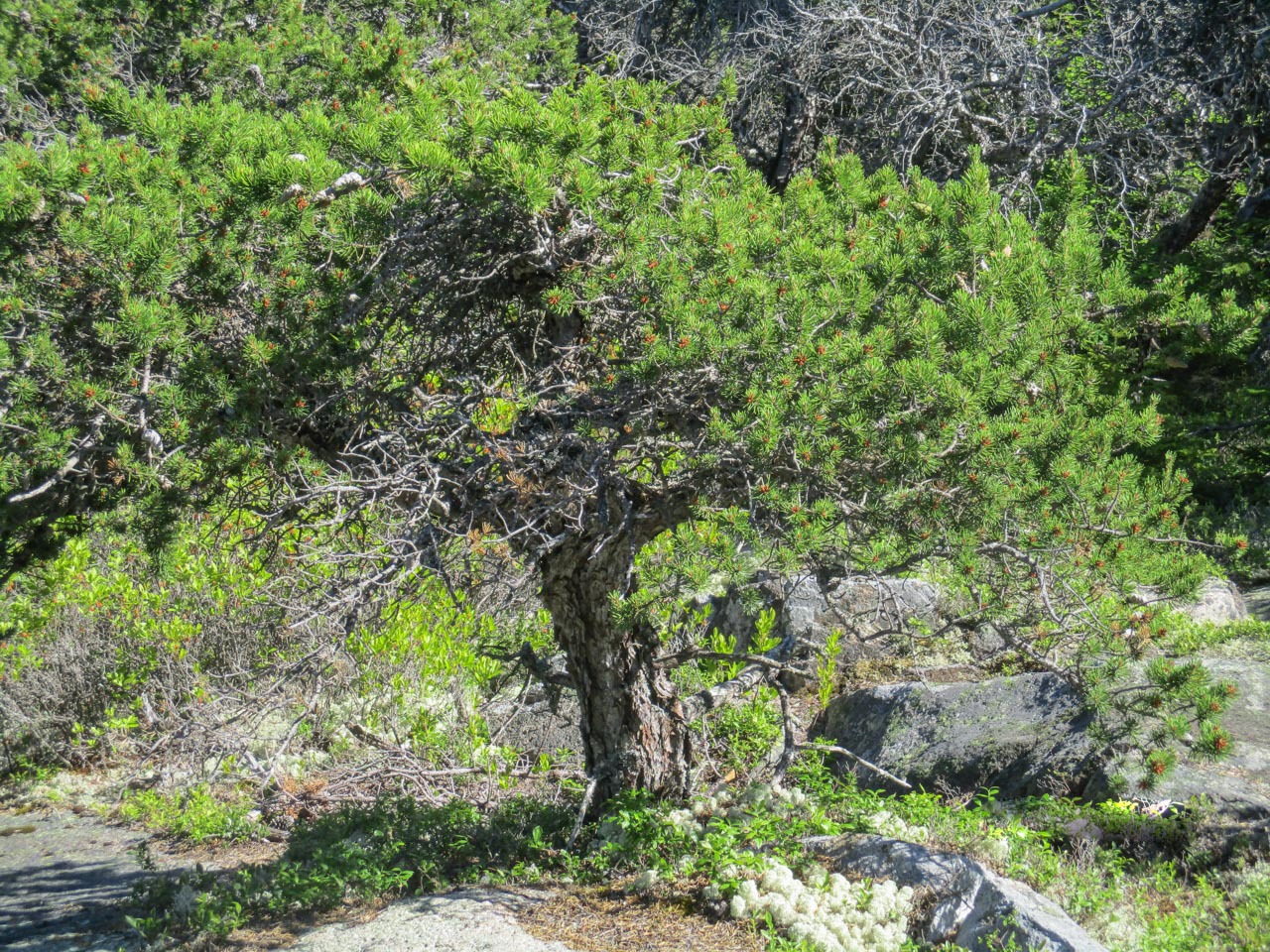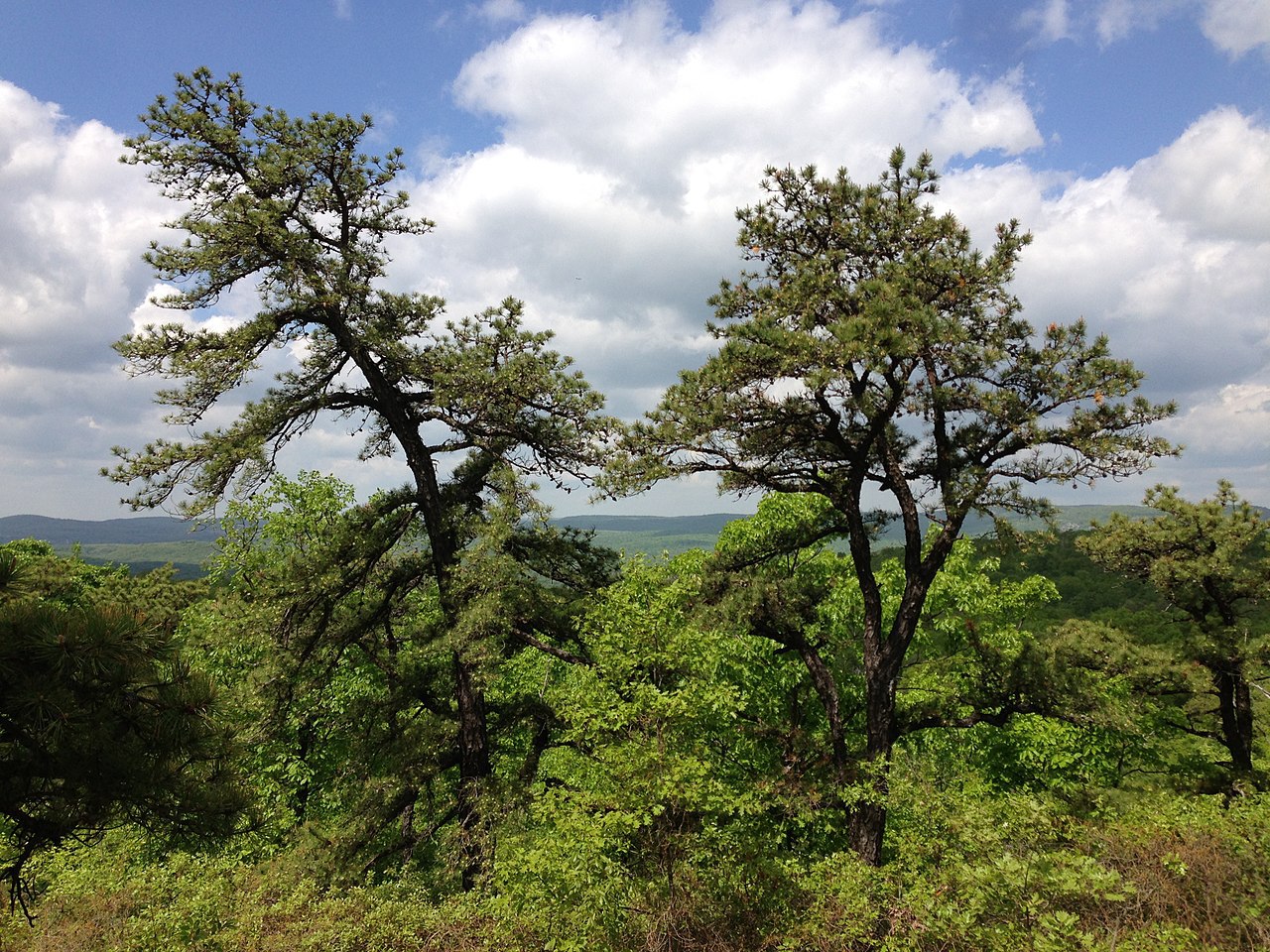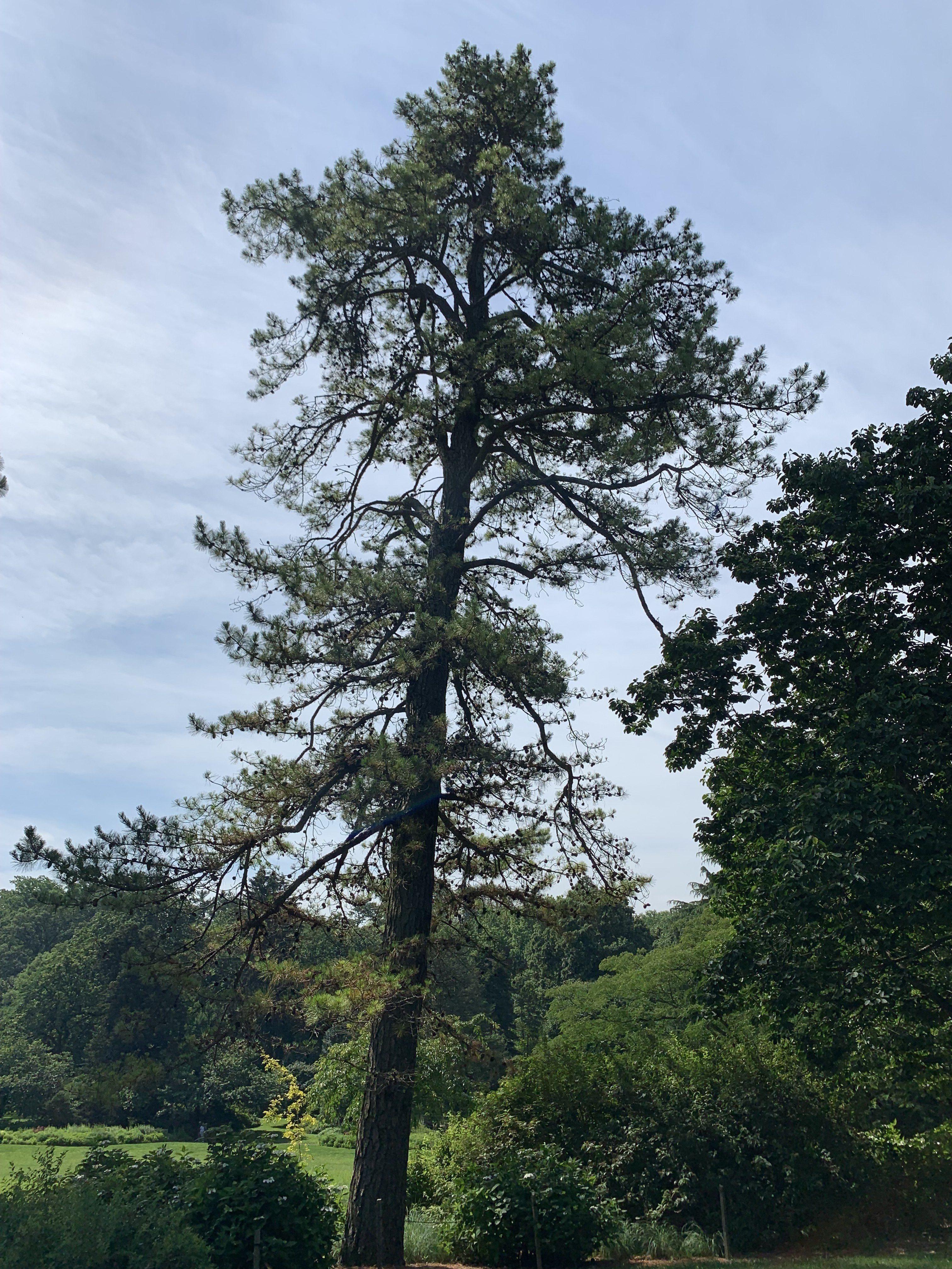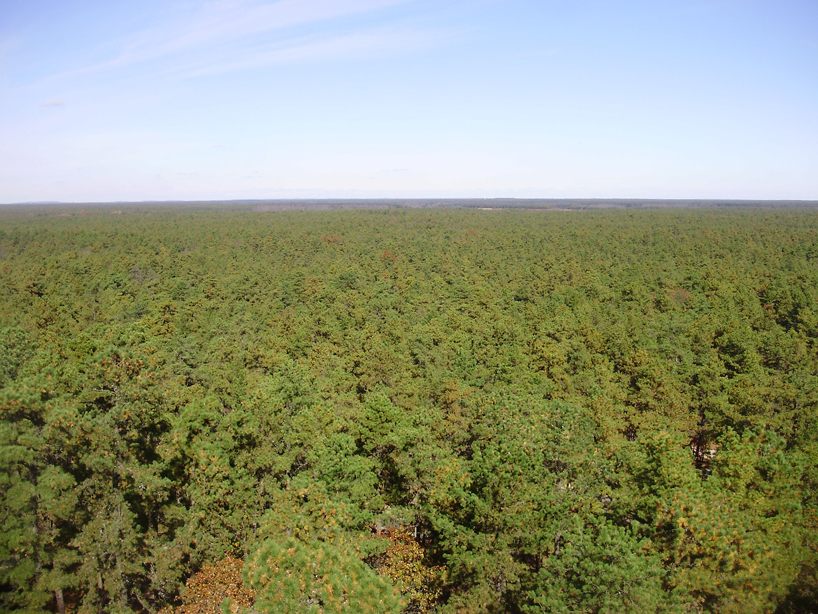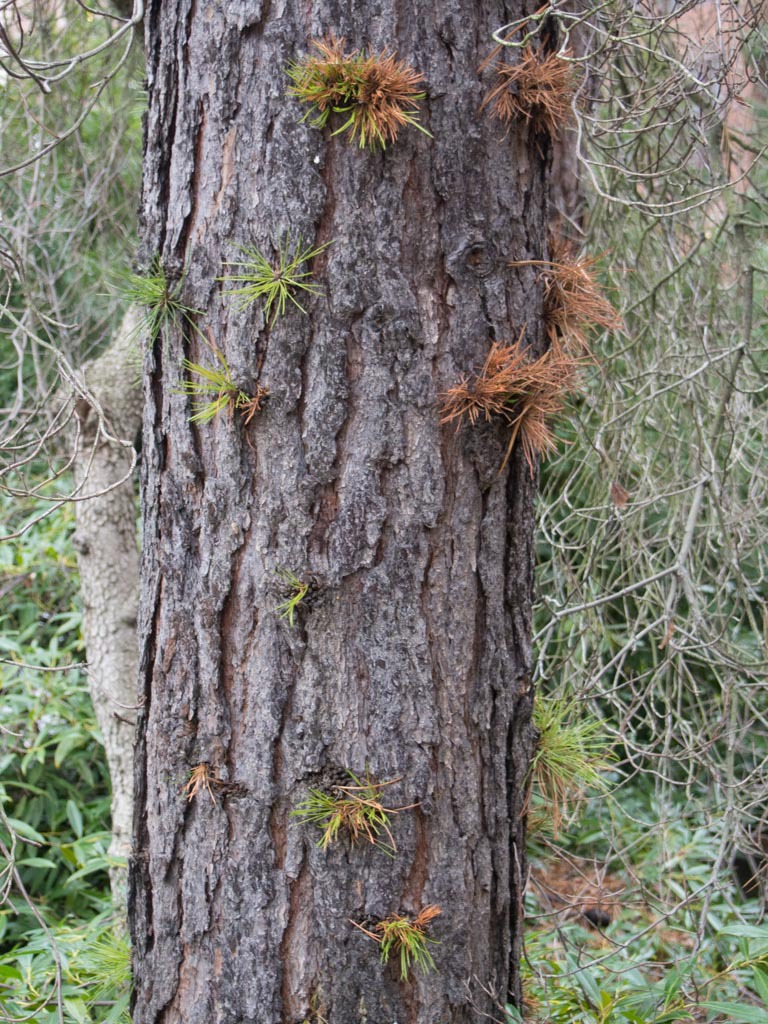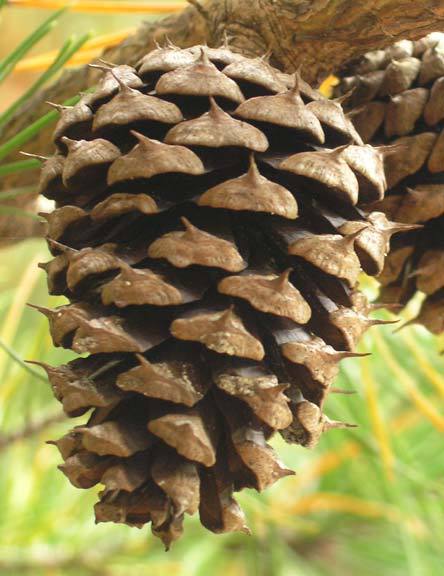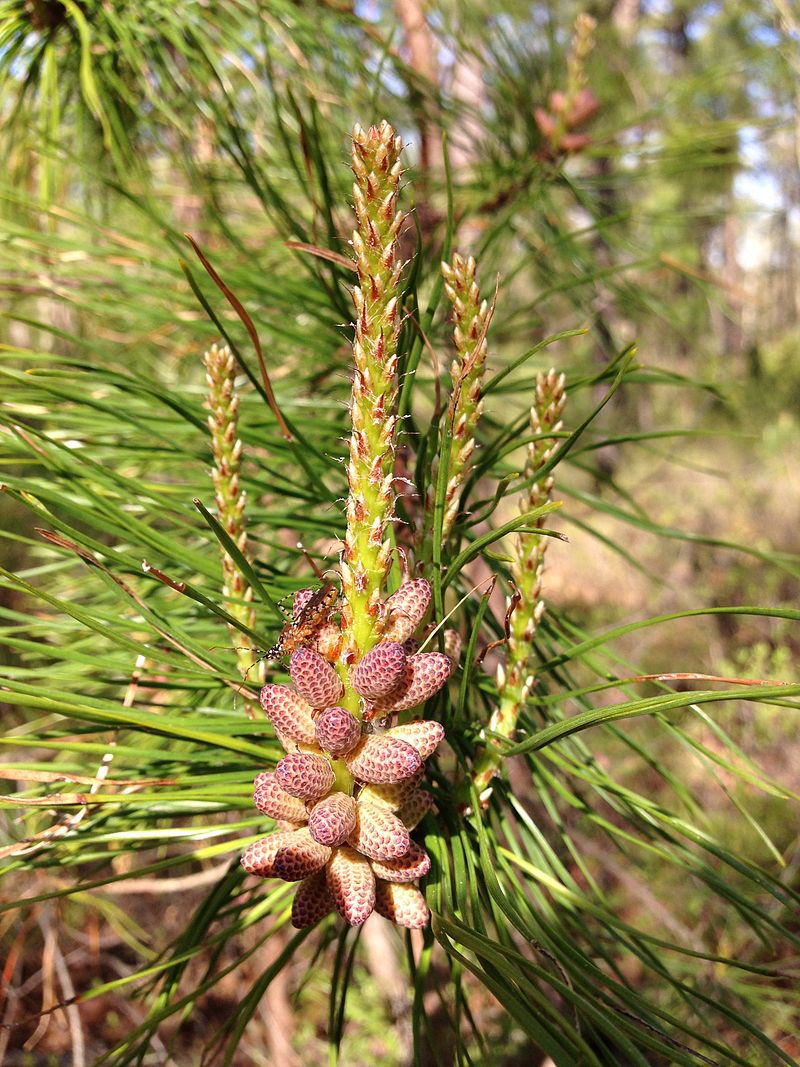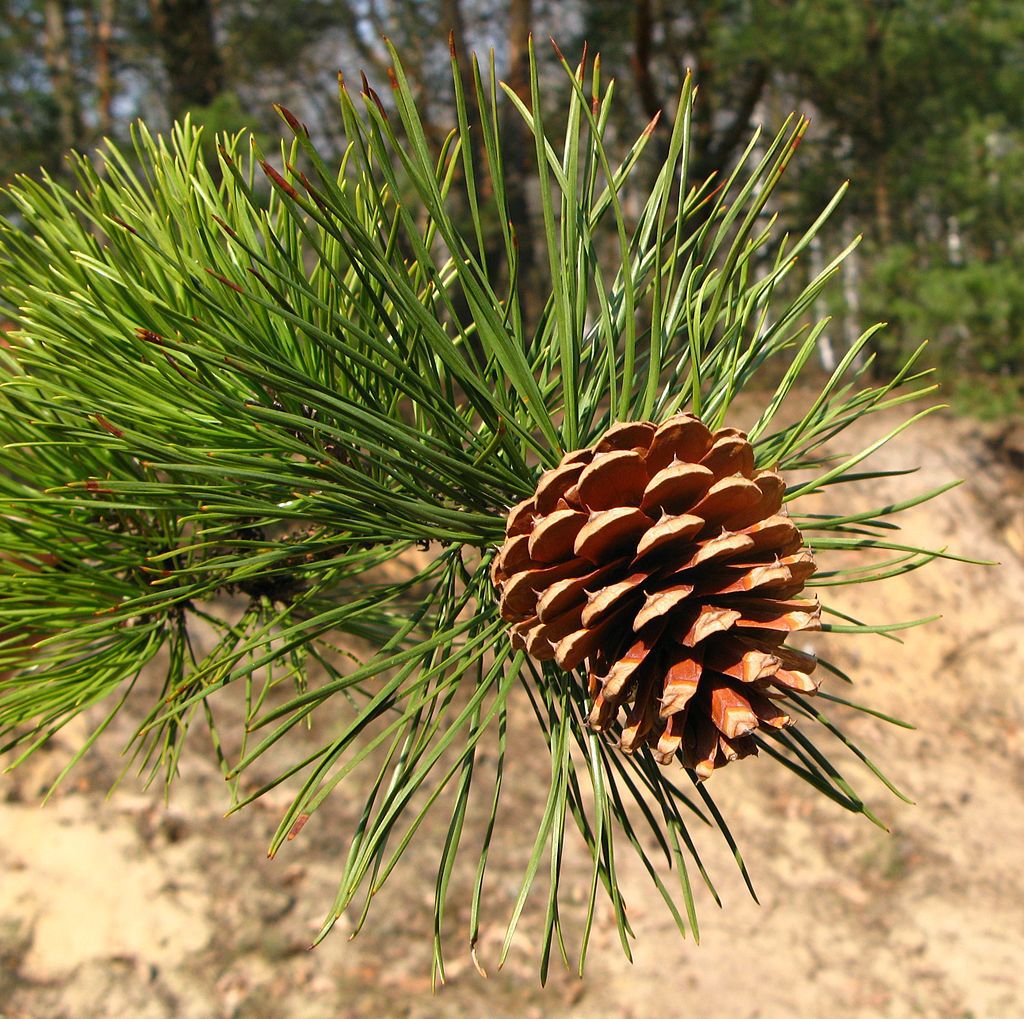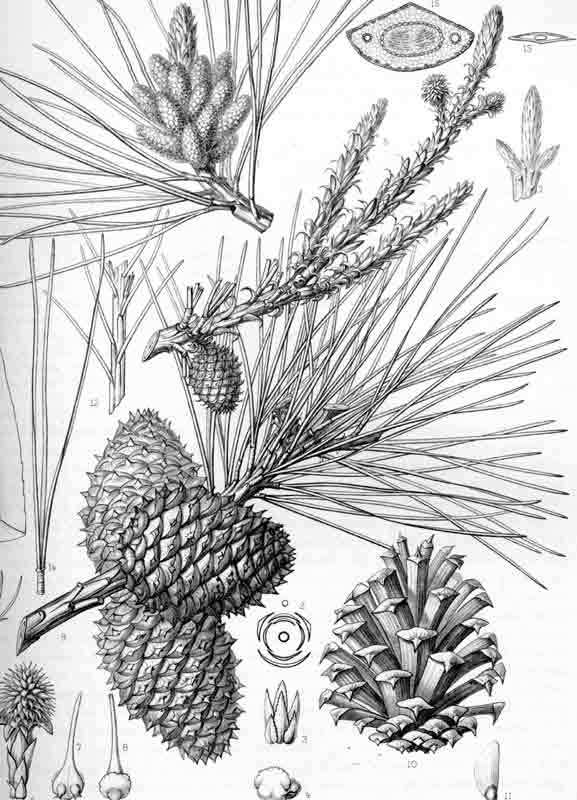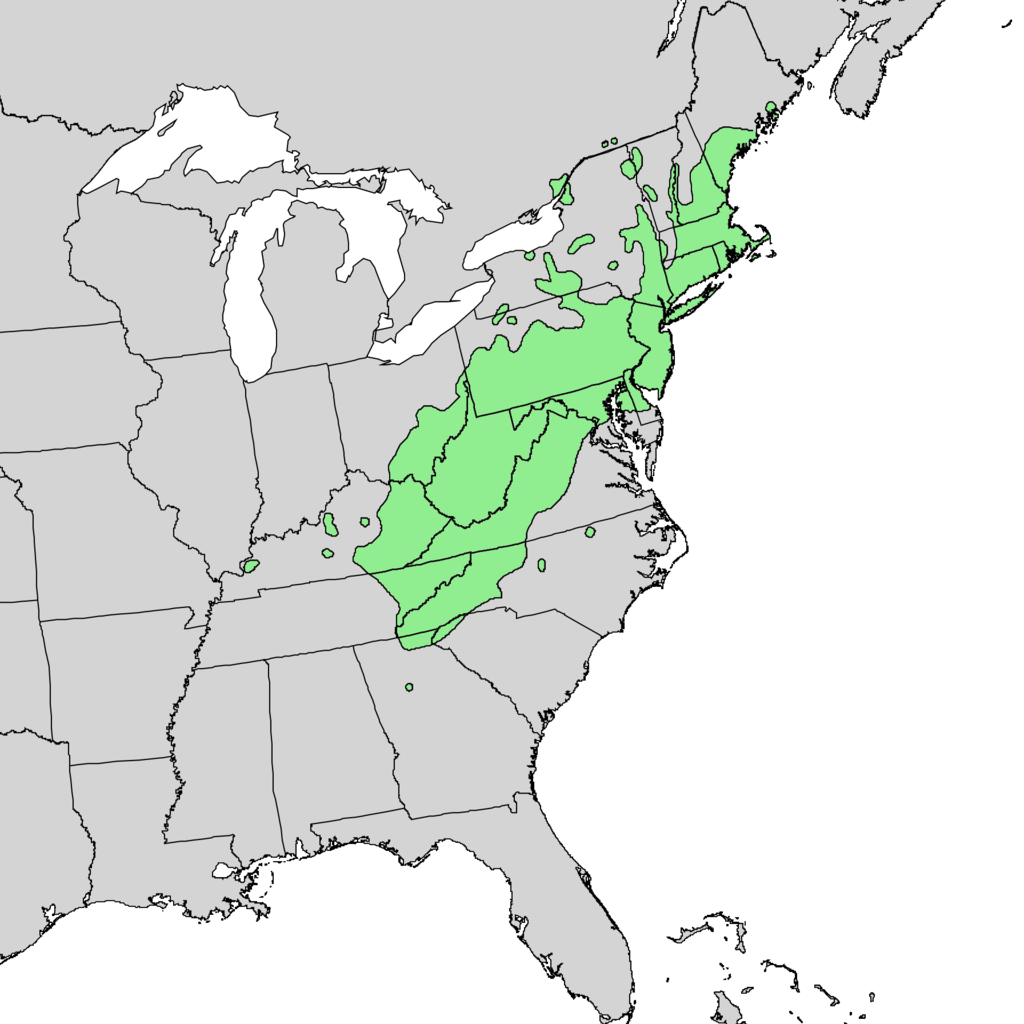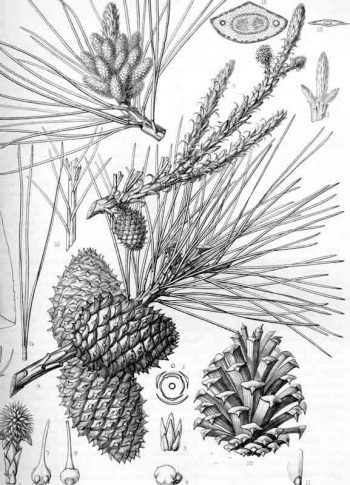
subgenus Pinus, section Trifoliae (Duhamel), subsection Australes (Loudon).
Pinus rigida, as described in 1768 by Philip Miller (1691-1771), in The Gardeners Dictionary, 8th edition, number 10, is commonly known as pitch pine; as well as pin rigide in the French language. The species name describes the exceptionally stiff needles.
Ethnobotany. It is considered to be a a low-grade timber species because of the frequency of multiple or crooked trunks. In the past, it was a major source of pitch and timber for ship building, mine timbers, and railroad ties because the wood's high resin content preserves it from decay. Pitch pine wood was also used for building radio towers in Germany, as at Muehlacker and Ismaning.
Archaeology indicates that the Iroquois, Shinnecock, and Cherokee nations all utilized pitch pine. The Iroquois used the pitch to treat rheumatism, burns, cuts, and boils. Pitch also worked as a laxative. A pitch pine poultice was used by both the Iroquois and the Shinnecock to open boils and to treat abscesses. The Cherokee used pitch pine wood in canoe construction and for decorative carvings.
Description. Pitch pine is an evergreen coniferous species of tree that grows to mature heights of 100 feet (31 m); with a straight or crooked trunk up to 36 inches (0.9 m) in diameter, measured at breast height, commonly with adventitious sprouts; crown rounded or irregular.
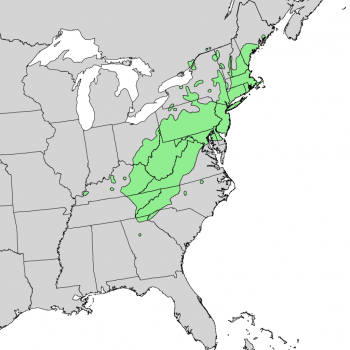
Distribution. This species is native to Canada - Ontario and Québec; south through USA - Maine, New Hampshire, Vermont, Massachusetts, Rhode Island, Connecticut, New York, New Jersey, Delaware, Pennsylvania, Maryland, Ohio, Virginia, West Virginia, Kentucky, Tennessee, North Carolina, South Carolina and Georgia; growing on upland or lowland sites on sterile, dry to boggy soils; at elevations from sea level to 4,800 feet (1,400 m).
Hardy to USDA Zone 4 - cold hardiness limit between -30° to -20°F (-34.3°C and -28.9°C).
